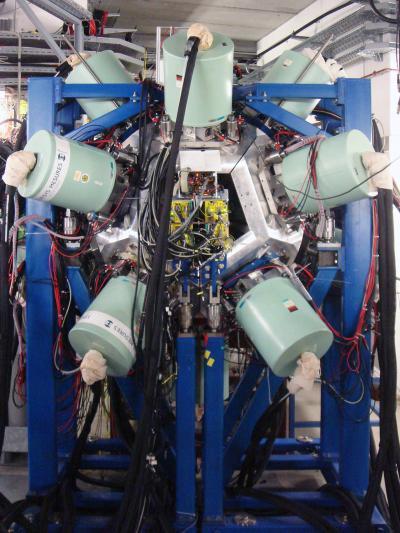Stable tin, as we know it, comprises 112 nuclear particles – 50 protons and 632 neutrons. The neutrons act as a kind of buffer between the electrically repelling protons and prevent normal tin from decaying. According to the shell model of nuclear physics, 50 is a "magic number" that gives rise to special properties. Tin-100, with 50 protons and 50 neutrons, is "doubly magic," making it particularly interesting for nuclear physicists.
Shooting xenon-124 ions at a sheet of beryllium, the international team headed by physicists from the TU Muenchen, the Cluster of Excellence Origin and Structure of the Universe and the GSI in Darmstadt succeeded in creating tin-100 and analyzing its subsequent decay. Using specially developed particle detectors, they were able to measure the half-life and decay energy of tin-100 and its decay products. Their experiments confirmed that tin-100 has the fastest beta decay of all atomic nuclei, as previously predicted by theoretical physicists.
A repeat of the experiment is slated for the near future at the RIKEN research center in Japan. The beam intensity at RIKEN is higher in the mean time, allowing even more precise measurements. The aim of the research work is to improve the understanding of processes in the formation of heavy elements during explosions on the surface of compact stars. In addition, the researchers hope to draw conclusions on the neutrino mass from the measurements.

This is a view of the experiment at the GSI from a perspective against the beam direction. The fragments are stopped at the center of a hedgehog of 105 liquid nitrogen-cooled gamma ray detectors, where the precise time point of the beta decay and the released decay energy are measured.
(Photo Credit: Thomas Faestermann / TUM)
Source: Technische Universitaet Muenchen